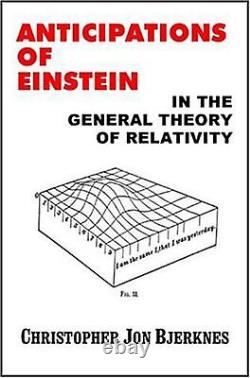
- Home
- Author
- A. A. Petrov (9)
- Abhay Ashtekar (4)
- Albert Einstein (43)
- David Bohm (8)
- Herbert E. Ives (3)
- John Stachel (4)
- Joshua Foer (7)
- Julie Aigner-clark (18)
- Kuznetsov, B. G (5)
- Lincoln Barnett (3)
- Motz And Weaver (6)
- Petr Beckmann (11)
- Pi Kids (4)
- Ronald R. Hatch (9)
- Sebastian Zeidler (4)
- Unknown (5)
- W. Israel (5)
- Walt Disney Company (3)
- Walter Isaacson (5)
- William Lane Craig (4)
- Other (2127)
- Book Title
- Isbn
- 0091066603 (5)
- 1423159853 (3)
- 9780080123158 (10)
- 9780199230723 (4)
- 9780201094480 (8)
- 9780307881601 (7)
- 9780415701747 (4)
- 9780521222853 (5)
- 9780786447732 (4)
- 9780786819126 (3)
- 9780911762396 (11)
- 9780963211309 (9)
- 9780971962989 (4)
- 9781138056688 (3)
- 9781412745178 (3)
- 9781423114529 (6)
- 9781423114567 (3)
- 9781501702082 (4)
- 9781892309808 (3)
- 9789812563941 (4)
- Other (2184)
- Isbn-10
- 0080123155 (10)
- 0091066603 (6)
- 0199230722 (3)
- 0415701740 (4)
- 0439963249 (2)
- 0521222850 (3)
- 0786447737 (3)
- 0792309502 (3)
- 0815958234 (3)
- 0911762396 (3)
- 0971962960 (3)
- 1107017440 (3)
- 1454907762 (3)
- 1501702084 (4)
- 3540257799 (2)
- 3540712925 (2)
- 3662308517 (2)
- 9380283024 (2)
- 9812563946 (3)
- 9814660566 (2)
- Other (2221)
- Language
- Unit Of Sale
Anticipations of Einstein in the General Theory of Relativity



Anticipations of Einstein in the General Theory of Relativity [Paperback] Bjerknes, Christopher Jon. In 1997, amid much fanfare, Leo Corry announced to the world that he had uncovered proof that Albert Einstein arrived at the generally covariant field equations of gravitation, before David Hilbert. Leo Corry joined with Juergen Renn and John Stachel and published an article in the journal "Science" arguing against Hilbert's priority. Their claims were largely based on a set of printer's proofs of David Hilbert's 20 November 1915 Goettingen lecture, which Corry had uncovered.
However, in this 1997 article, "Belated Decision in the Hilbert-Einstein Priority Dispute, " Corry, Renn and Stachel failed to disclose the fact that these printer's proofs were mutilated, and are missing a critical part. Full disclosure of the facts reveals that even in their mutilated state, these proofs prove that Hilbert had a generally covariant theory of gravitation before Einstein, and that Einstein plagiarized these equations from Hilbert.
The author of "Albert Einstein: The Incorrigible Plagiarist" focuses in on the general theory of relativity and discredits the baseless historical revisionism of Leo Corry, Juergen Renn and John Stachel. The direct comparison of primary source material demonstrates that Albert Einstein did not originate the theory of relativity.
Formal mathematical proofs explain how Einstein was forced to fudge his equations in order to derive the results Paul Gerber and Johann Georg von Soldner had published long before him. Einstein did not yet have the benefit of plagiarizing David Hilbert's generally covariant field equations of gravitation and was operating under an erroneous assumption.
An extensive history of the principle of equivalence proves that Einstein plagiarized this idea. The book reprints the relevant papers by Einstein, Soldner, Gerber, and Hilbert, as well as the remainder of David Hilbert's mutilated printer's proofs of his article "The Foundations of Physics". While the book presents the mathematical proofs needed to justify its claims, the non-mathematical reader will find it rich in prose and will be able to follow the arguments and the history presented.
Xtx Inc (September 9, 2003). 5.75 x 1 x 8.75 inches.
Best Sellers Rank: #4,206,869 in Books (See Top 100 in Books) #3,219 in Historical Study Reference (Books) #4,305 in History Encyclopedias #4,332 in Physics (Books). #3,219 in Historical Study Reference (Books). #4,305 in History Encyclopedias.
